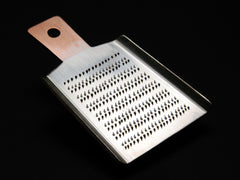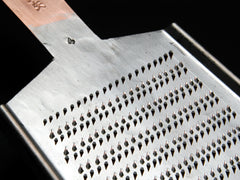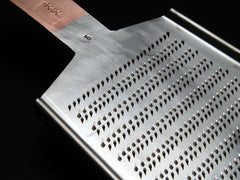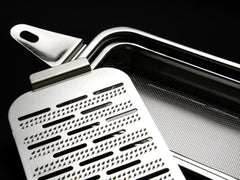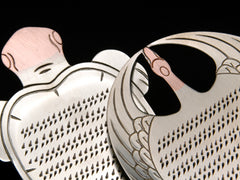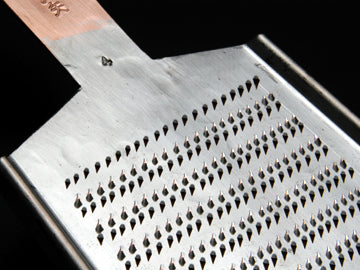
Handmade pure copper grater
This is a handmade copper grater, with a sharp blade hand-carved by a craftsman into a copper plate.
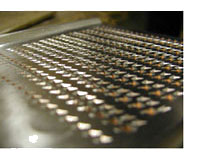
Hand-carved, irregular blades for the ultimate grating experience
The copper plate material is tightly clamped with rollers. This extra step makes the entire piece stronger and the blades sharper.
Moreover, because the blades are hand-carved, they are slightly misaligned, allowing for extremely efficient grating. Plastic and mass-produced graters have blades that are spaced and oriented the same, so even when grating something like daikon radish, grooves quickly form and the grater becomes ineffective. This grater eliminates the hassle of having to unconsciously turn the daikon radish around or exert force to grate it in a circular motion. Because
of their durable blades, the battledore and box graters are said to last a professional chef 10 years. They can be resharpened (re-sharpened) three times, meaning they can be used for 40 years. For an average household, they'll literally last a lifetime.
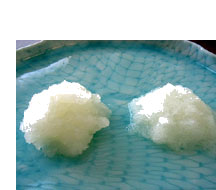
I actually tried using graters (No. 4, No. 3, box type)
I actually grated daikon radish using Oya's graters (No. 4, No. 3, box type), a ceramic grater, and an aluminum grater to compare them.
The ceramic grater just mashes the daikon radish, which releases a lot of its delicious juice. Some people drain the juice before using the grated daikon radish, but that's actually where it becomes delicious, so it's a waste! The finished product is watery, and the daikon radish particles feel more like the leftover pulp from grinding than like it's been grated. Turning and flipping the daikon radish is quite a hassle! The
aluminum grater was a little better, but it still ended up a little watery, and the daikon particles were too fine, so it didn't really bring out the daikon's flavor. Also, as you grate the daikon, grooves gradually form in the radish, which makes it quite a hassle to have to flip the daikon radish around.
On the other hand, Oya's grater has large, sharp blades that cut the radish into small pieces, so it doesn't ruin the delicious soup much, and leaves the radish in its lumps, resulting in grated radish with a strong radish flavor.
*The photo shows a comparison of radish grated with Oya's graters (No. 4, No. 3, box type) and grated radish grated with a ceramic grater. Look at how "fluffy" it is! The difference is obvious at a glance.
Care Instructions
Simply rinse with water and wipe off any excess moisture after use. That's the general rule. However, because the blades of a grater are angled, they can easily get tangled with a dish towel, making it difficult to wipe. Therefore, after washing, simply pour warm water over it, shake it off, and let the residual heat dry it. If
vegetable or fruit fibers are stuck and difficult to remove, simply rinse them off with an old toothbrush and you're good to go.
However, even with plating, discoloration is inevitable. Please consider it a unique character that develops with use, and use it for many years to come. It
should last for at least 10 years, but if it loses its sharpness, please contact us at takuminohako@gmail.com. We will send it to the manufacturer, have the old blades removed, re-plated, and sharpened. There will be small holes left from the previous blades, but it will shine like new again!
(We charge a labor fee of approximately half the product price.)
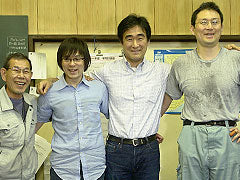
A word from the craftsman
"I want people to use our grater and discover the true deliciousness of grated daikon radish. When you use this grater, it makes a huge difference."
